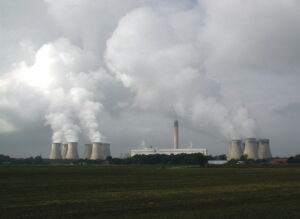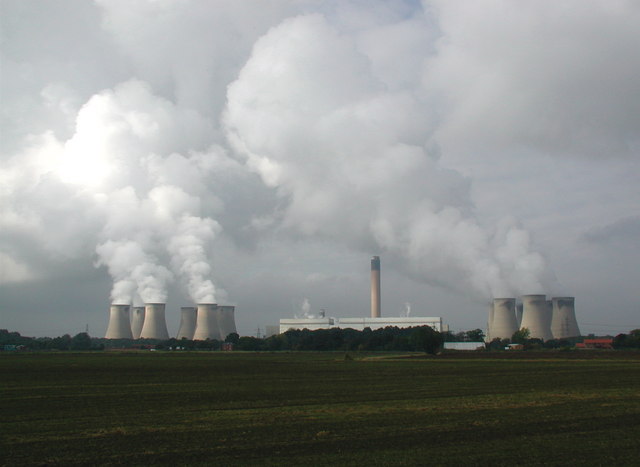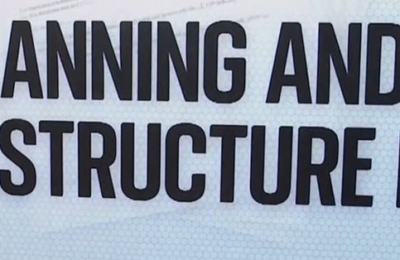
Sean Thompson writes:
On 8 August, police in North Yorkshire arrested 25 members of the environmental group Reclaim the Power and seized their tents and safety equipment in order to prevent them from setting up a five day camp near Drax power station. Their aim was to protest – quite legally – against its role as both a major polluter and the recipient of around half a billion pounds of state subsidy every year.
Drax, which when it was completed in 1986 was Britain’s largest coal powered power station, began its conversion to wood burning in 2004 and completed it by 2023. Today it has a generation capacity of 3.2GW and in 2023 generated almost 13TWh of electricity. However, it is also Britain’s largest emitter of CO2, producing nearly 3% of the UK’s total carbon emissions. In its annual review of the largest emitters in the UK, published at the beginning of August, the independent energy think tank Ember reported that Drax emitted 11.5 Mt of CO2 within the UK in 2023. Its emissions are more than double that of the second worst polluter, Port Talbot Steel works, more than four times that of the UK’s last remaining coal-fired power station at Ratcliffe-on-Soar and more than the next four most polluting power plants in the UK combined.
The relatively low inherent energy density of biomass fuels, combined with the low efficiency of bioenergy plants, mean that per megawatt-hour (MWh), a biomass power plant emits about 145% the CO2 of a coal plant, and 340% the CO2 of a combined cycle natural gas plant. And yet, since 2012 Drax has claimed almost £7 billion in subsidies from British energy bills to support its biomass generation. In 2023 it received £539 million – almost £1.5 million a day – and announced a profit of £1.2 billion.
This extraordinary state of affairs is due to the UK’s emissions trading schemes (ETS) not requiring wood-burning power plants to report their emissions, on the assumption that those emissions are offset by forest regrowth. In addition, international carbon accounting rules state that greenhouse gas emissions from burning wood should be counted in the country where the trees are felled as opposed to where they are burned. This gives biomass power plants in the UK a sustainability classification that makes them eligible for public subsidies – which are due to continue until at least 2027.
However, there is a mounting body of evidence and expert opinion that this assumption is critically flawed and must be overturned. The European Academies Sciences Advisory Council states that using woody biomass for power “is not effective in mitigating climate change and may even increase the risk of dangerous climate change”. As Mary Booth, of the environmental organisation Partnership for Policy Integrity, points out “just because something is counted as zero because of an accounting convention does not mean it’s carbon neutral”.
Biomass is considered a renewable energy source because its inherent energy comes from the sun and because it can regrow in a relatively short time. The idea is that if trees harvested as biomass are replanted as fast as the wood is burned, new trees take up the carbon produced by the combustion, the carbon cycle theoretically remains in balance, and no extra carbon is added to the atmospheric balance sheet—so biomass is arguably considered “carbon neutral.”
In fact, the reality is a lot more complicated. Whether or not biomass is truly carbon neutral depends on the time frame being studied, what type of biomass is used, the combustion technology, which fossil fuel is being replaced and what forest management techniques are employed in the areas where the biomass is harvested. Biomass can reduce carbon dioxide if fast growing crops are grown on otherwise unproductive land but cutting or clearing forests for energy, either to burn trees or to plant energy crops, releases carbon into the atmosphere that would have been sequestered had the trees remained untouched, and the regrowing and thus recapture of carbon can take decades or even a century. And, of course, we don’t have a century to reduce carbon emissions to effectively zero.
Participating governments at the COP26 climate summit in Glasgow didn’t take a clear stance on biomass. However, the Glasgow Leaders’ Declaration on Forests and Land Use, signed by leaders of over 130 countries, including the UK, does commit them to curbing forest loss by 2030. How this was to be done was, of course, not made clear. However, as a spokesperson from the transatlantic environmental coalition, Cut Carbon Not Forests, warned, the agreement will fail if countries do not come to terms with their dangerous reliance on biomass.”It’s hypocritical for countries, including the UK, to sign this declaration while continuing billions in subsidies for this dirty energy industry,” she said.
Most of the wood pellets burned by Drax are produced in its 17 pellet plants in the US and Canada. In 2022, researchers for the BBC’s Panorama program discovered that Drax had obtained logging licences in British Columbia and filmed logs being taken from primary forest to a pellet plant owned by Drax. (Primary forests are natural forests that have not been significantly disturbed by human activity). According to British Columbia’s Ministry of forests, in 2023 Drax extracted over 40,000 tonnes of timber from ‘old growth’ forests, which, it says provides “unique habitats, structures and ecological functions”. For example, Drax took 26% of all the harvested wood from an 87 hectare ‘cut block’ west of Prince George in British Columbia, which was all classified as old growth. In fact, 90% of the block had the even higher classification of ‘priority deferral area’. This category is for old-growth forests that are “rare, at risk and irreplaceable”, according to an independent expert panel in British Columbia. The experts recommended that logging should be paused in priority deferral areas, but currently it’s still legal to cut them down.
Forestry records show that in the first nine months of last year Drax took wood from 30 different timber marks in British Columbia where more than 25% of the forest had been designated as old growth. (Timber marks are codes beaten on to wood by specially made hammers and identify all of the wood cut under individual logging licences on one or more parcels of land.) Twenty-six of those timber marks included the even rarer priority deferral areas. In total, Drax sourced about 55,000 cubic metres of whole logs – that’s more than 1,100 large truck loads – from timber marks containing old-growth forest.
Ecologist Michelle Connolly, from the British Columbian group, Conservation North, says making pellets from old forests can never be sustainable. “Old-growth forests in British Columbia are almost gone because of 70 years of logging to feed sawmills and pulp mills, and Drax is helping push our remaining ones off the cliff, along with our native biodiversity,”
Last month, after an investigation by Ofgem into the sustainability of the biomass it uses, concluded that there was “an absence of adequate data governance and controls in place” when it came to profiling the sources of wood used by Drax from Canada and growing scepticism over its green credentials, the company agreed to pay £25m towards a voluntary redress scheme – which is used to fund support for vulnerable customers – after the energy regulator found it had submitted inaccurate data on the sourcing of wood pellets
Politicians of all the mainstream parties make much of the need for UK ‘energy security’, yet like the UK’s gas power plants, the UK biomass power sector is highly dependent on imports. Drax consumed around 5.8 million tonnes of wood biomass in 2023, none of which was sourced in the UK. The UK is the third-largest importer of timber in the world, after China and the USA. Altogether, the UK produced only 300,000 tonnes of wood pellets in 2023, meaning that Drax power station consumes just under 20 times the UK’s domestic pellet production annually.
And because Drax is a wood pellet producer as well as a consumer, energy supply is just one of its competing priorities. When pellet prices soar, it may be more profitable to sell the fuel on the market rather than use it to generate power in the UK. The result of this equation is that during times of high electricity demand in the European gas crisis in 2022, Drax’s power plants sat idle for weeks, costing the UK consumer an estimated £639 million in foregone cost reductions.
Drax has been lobbying the government for the continuation of the existing subsidy scheme until 2030, when the company hopes to be eligible for a fresh stream of subsidies for its plan to fit carbon capture technology to the plant. While it seems unlikely that the UK government will stop Drax’s biomass subsidies ahead of their contracted end date in 2027 the government’s scientific advisors on the Climate Change Committee have warned that subsidies for burning wood pellets should not be extended beyond then.
However, Drax is looking to the future as far as trousering government largesse is concerned. It has proposed the development of BECC, or bioenergy with carbon capture. In January the company received government permission to go ahead with fitting carbon capture technology to two of its four biomass units and piping the CO2 captured into empty oil and gas wells under the North Sea. If Drax gets approval to fit all four of its biomass units with BECC, analysts have predicted that the revamp could be one of the most expensive energy projects in the world, at a projected total cost of more than £43 billion and would add about £1.7 billion to energy bills every year – with consumers expected to pick up the tab of course.
But cheaper, quicker – and much greener – alternatives are available without the need for billions in public subsidies. The rapid expansion of renewable energy generation based on wind and solar would be much less reliant on fuel imports than biomass or gas power plants meaning that, once built, the cost is far less exposed to international price spikes, and the latest offshore wind auction guarantees power around 50% cheaper (48% to 67% cheaper) than that from Drax power station, without even taking into account the huge extra costs of its grandiose (and untested) BECC project. One can only hope that the new Labour Government’s apparently firm commitment to green energy will to prove to be more than merely rhetorical and that it won’t fall for the biofuel lobby’s greenwashing agenda – miracles have been known to happen.



